
Val Logsdon Fitch was an American nuclear physicist who, with co-researcher James Cronin, was awarded the 1980 Nobel Prize in Physics for a 1964 experiment using the Alternating Gradient Synchrotron at Brookhaven National Laboratory that proved that certain subatomic reactions do not adhere to fundamental symmetry principles. Specifically, they proved, by examining the decay of K-mesons, that a reaction run in reverse does not retrace the path of the original reaction, which showed that the reactions of subatomic particles are not indifferent to time. Thus the phenomenon of CP violation was discovered. This demolished the faith that physicists had that natural laws were governed by symmetry.
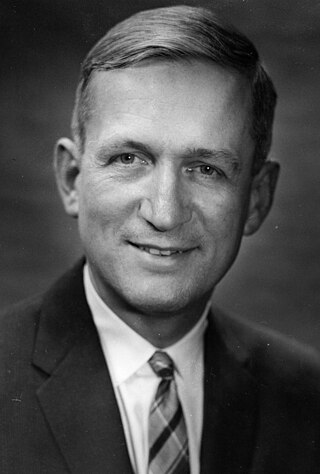
Norman Foster Ramsey Jr. was an American physicist who was awarded the 1989 Nobel Prize in Physics for the invention of the separated oscillatory field method, which had important applications in the construction of atomic clocks. A physics professor at Harvard University for most of his career, Ramsey also held several posts with such government and international agencies as NATO and the United States Atomic Energy Commission. Among his other accomplishments are helping to found the United States Department of Energy's Brookhaven National Laboratory and Fermilab.
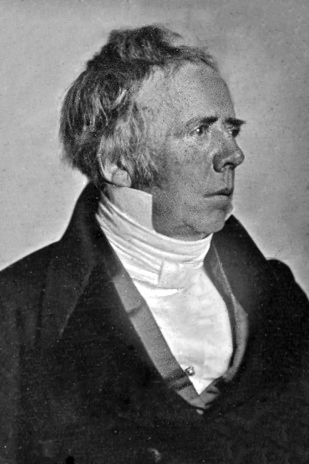
The Oersted Medal recognizes notable contributions to the teaching of physics. Established in 1936, it is awarded by the American Association of Physics Teachers. The award is named for Hans Christian Ørsted. It is the Association's most prestigious award.
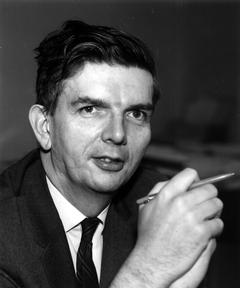
Robert Henry Dicke was an American astronomer and physicist who made important contributions to the fields of astrophysics, atomic physics, cosmology and gravity. He was the Albert Einstein Professor in Science at Princeton University (1975–1984).
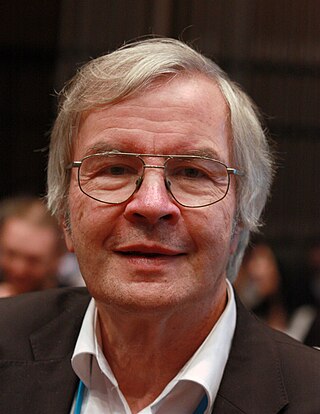
Theodor Wolfgang Hänsch is a German physicist. He received one-third of the 2005 Nobel Prize in Physics for "contributions to the development of laser-based precision spectroscopy, including the optical frequency comb technique", sharing the prize with John L. Hall and Roy J. Glauber.

John Lewis "Jan" Hall is an American physicist, and Nobel laureate in physics. He shared the 2005 Nobel Prize in Physics with Theodor W. Hänsch and Roy Glauber for his work in precision spectroscopy.
The Louisa Gross Horwitz Prize for Biology or Biochemistry is an annual prize awarded by Columbia University to a researcher or group of researchers who have made an outstanding contribution in basic research in the fields of biology or biochemistry.
IEEE W.R.G. Baker Award provided by the Institute of Radio Engineers (IRE), was created in 1956 from a donation from Walter R. G. Baker (1892–1960) to the IRE. The award continued to be awarded by the board of directors of the Institute of Electrical and Electronics Engineers (IEEE), after the IRE organization merged into the IEEE in 1963. Recipients received a certificate and honorarium "for the most outstanding paper reporting original work" in one of the IEEE publications, including the transactions, journals, proceedings, and magazines of the IEEE Societies. The award was discontinued in 2016.

The NASA Exceptional Scientific Achievement Medal was established by NASA on September 15, 1961, when the original ESM was divided into three separate awards. Under its guidelines, the ESAM is awarded for unusually significant scientific contribution toward achievement of aeronautical or space exploration goals. This award may be given for individual efforts that have resulted in a contribution of fundamental importance in this field, or have significantly enhanced understanding of this field.
The Thomas Hunt Morgan Medal is awarded by the Genetics Society of America (GSA) for lifetime contributions to the field of genetics.
The Passano Foundation, established in 1945, provides an annual award to a research scientist whose work – done in the United States – is thought to have immediate practical benefits. Many Passano laureates have subsequently won the Nobel Prize.
The Davisson–Germer Prize in Atomic or Surface Physics is an annual prize that has been awarded by the American Physical Society since 1965. The recipient is chosen for "outstanding work in atomic physics or surface physics". The prize is named after Clinton Davisson and Lester Germer, who first measured electron diffraction, and as of 2007 it is valued at $5,000.
The IEEE Edison Medal is presented by the Institute of Electrical and Electronics Engineers (IEEE) "for a career of meritorious achievement in electrical science, electrical engineering, or the electrical arts." It is the oldest medal in this field of engineering. The award consists of a gold medal, bronze replica, certificate, and honorarium. The medal may only be awarded to a new leap/breakthrough in the technological area of science.
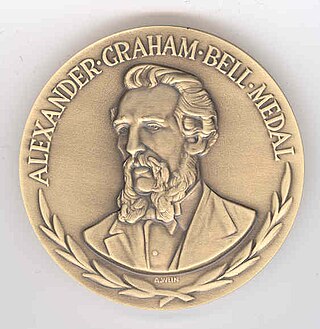
The IEEE Alexander Graham Bell Medal is an award honoring "exceptional contributions to communications and networking sciences and engineering" in the field of telecommunications. The medal is one of the highest honors awarded by the Institute of Electrical and Electronics Engineers (IEEE) for achievements in telecommunication sciences and engineering.
The Irving Langmuir Prize in Chemical Physics is awarded annually, in even years by the American Chemical Society and in odd years by the American Physical Society. The award is meant to recognize and encourage outstanding interdisciplinary research in chemistry and physics, in the spirit of Irving Langmuir. A nominee must have made an outstanding contribution to chemical physics or physical chemistry within the 10 years preceding the year in which the award is made. The award will be granted without restriction, except that the recipient must be a resident of the United States.
The IEEE Donald G. Fink Prize Paper Award was established in 1979 by the board of directors of the Institute of Electrical and Electronics Engineers (IEEE) in honor of Donald G. Fink. He was a past president of the Institute of Radio Engineers (IRE), and the first general manager and executive director of the IEEE. Recipients of this award received a certificate and an honorarium. The award was presented annually since 1981 and discontinued in 2016.

David Jeffery Wineland(born February 24, 1944) is an American Nobel-laureate physicist at the National Institute of Standards and Technology (NIST). His work has included advances in optics, specifically laser-cooling trapped ions and using ions for quantum-computing operations. He was awarded the 2012 Nobel Prize in Physics, jointly with Serge Haroche, for "ground-breaking experimental methods that enable measuring and manipulation of individual quantum systems".









